
134th Infantry Regiment Website
"All Hell Can't Stop Us"

 |
134th Infantry Regiment Website"All Hell Can't Stop Us" |
 |
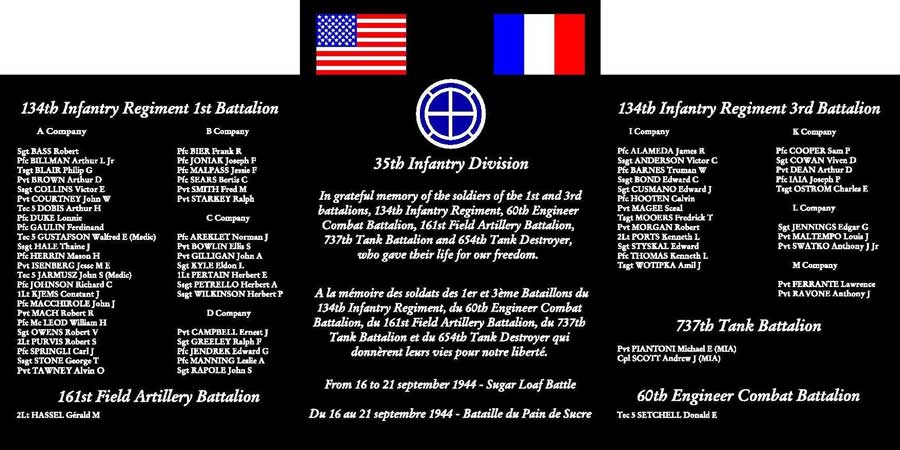
This memorial is located at Agincourt, a small town near Nancy, France. It is dedicated to all the soldiers who were Killed in Action or Died of Wounds during the Battle of Sugar Loaf, September 16 - 21, 1944. The official Dedication Ceremony was held on Sunday, September 20, 2015.
|
The Battle of Sugar
Loaf - du Pain de Sucre, 16 to 18 September 1944 This was a key terrain feature. It rose, a knob independent of other hill systems, to a height as great as that of the Plateau de Malzeville, and, affording excellent observation in every direction, it commanded practically the entire valley. This became the immediate objective for the 1st Battalion. In the vanguard of that attack was Sergeant Ralph F. Greely and his machine gun section of Company D. When enemy direct fire guns and small arms fire threatened to halt the advance, Greely set an example in courage which went far in assuring its continuation; he seized a mounted heavy machine gun and dragged it alone to an exposed position where he could support the advance. It cost him his life, but the attack now gathered momentum. Driving Nazi defenders before it, the battalion, in company with Company A of the 737th Tank Battalion, moved steadily along, and its drive for the key terrain feature was not to be denied. Beyond Pain de Sucre, on the northwest, lay a typical French village called Agincourt. This was not the same Agincourt known to history through the exploits of Henry V in the Hundred Years' War, but its association with the field of battle was much more real to the men of the 134th. Effective defensive fires poured from Agincourt toward the advancing skirmishers as they came into sight over the western nose of Pain de Sucre. A high velocity tank gun scored a direct hit on one of the supporting Sherman tanks, and it stopped dead and burst into flames. 2nd Lt. Gerald M. Hassel of Wyoming, field artillery observer, hurried forward in order that he might bring effective artillery fire on the enemy positions; but he too came under the fire of the enemy tank and was killed in the attempt. Capt. Francis C. Mason sensed that this was a critical point, and he knew that the only way to reduce the effectiveness of the enemy fire was to keep moving forward. He carried men of Company B along with him; Kjems and Company A remained on his flank, and supporting tanks stayed with them. They swept into Agincourt and began routing the Nazis at close range. American tankers gained revenge in knocking out a dreaded German tank in the streets.
Even on forcing entry into the town, the issue had not yet been settled.
That remained for decisive action on the part of heroic individuals. It
required effort such as that of Sergeant Thaine J. Hale of Nebraska, as
critical fighting continued through dusk and evening. Hale was one of a
group of some eighty men of the 1st Battalion which suddenly found
itself cut off. The immediate response of some to being surrounded is an
attitude of resignation. Sergeant Hale's reaction was quite the
opposite. A veteran platoon guide of Company A, Sergeant Hale had been
wounded in Normandy and only recently returned to his company. He was
anxious to make up for all the time which he had lost. His personal
courage knew no bounds. The 80 men held on to 20 prisoners which they
had captured and took refuge in barns along one of the streets. It was
clear that their continued safety demanded immediate action. Sergeant
Hale moved quickly. He ran out into the confusion of the village, making
his way through growing darkness by the unsteady glow of the burning
tank, found an American tank outside the village, and jumping on it, he
directed it to the vicinity of his trapped comrades. At this point it
was discovered that the tank was without a machine gunner. Sergeant
Albert Rogers of Kansas, a machine gun squad leader among the encircled
men in Agincourt, rushed out to fill this vacancy. He climbed into the
tank and got its valuable machine gun into action. The tank fire was
effective in dispersing the German forces and permitting the Americans
to rejoin their units; but during the maneuvering in the streets, while
Thaine Hale rode the tank to rescue those 80 men, he met his own death. |
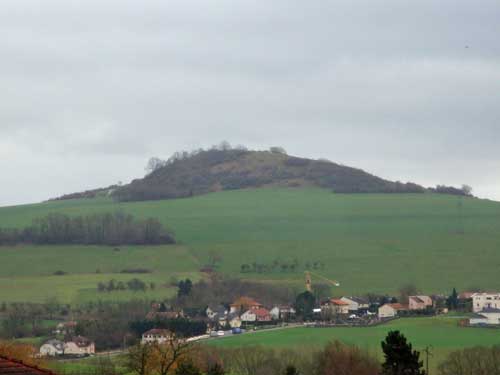
Sugar Loaf - du Pain de Sucre near Agincourt, France
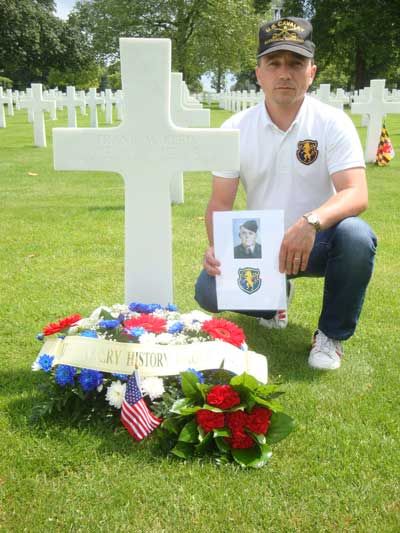
Emmanuel Peignier at Brittany American Cemetery, St. James France where he has adopted the grave of Pvt. Frank M Keris, 6th Cavalry Regiment. He is the coordinator for the Agincourt Memorial Project.
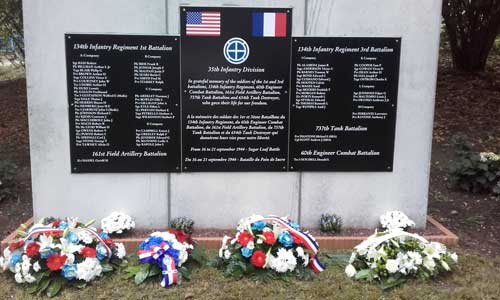 |
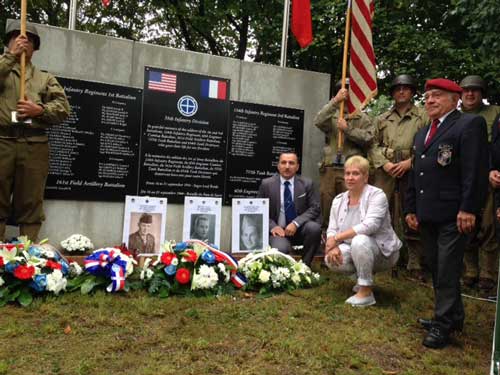 |
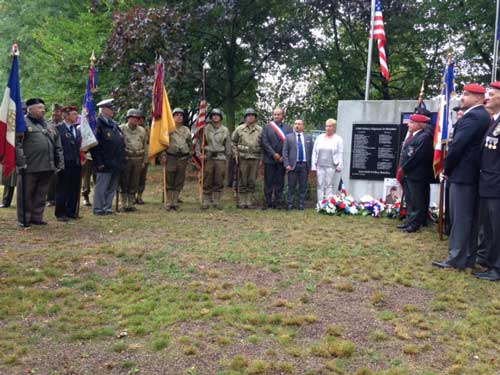 |
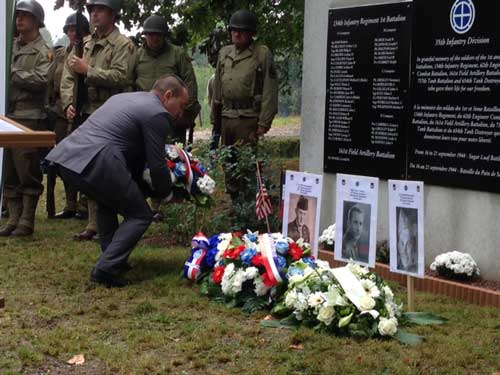 |
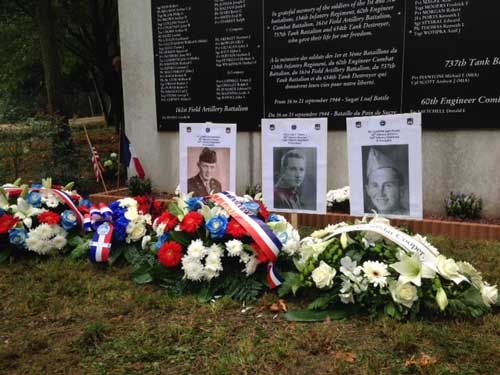 |
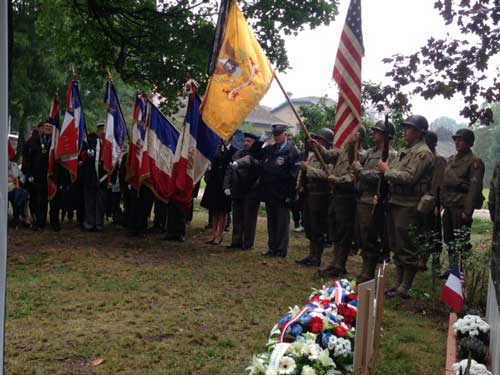 |
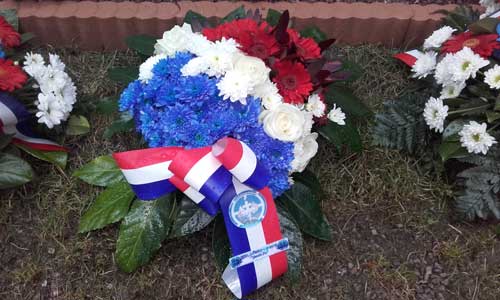 |
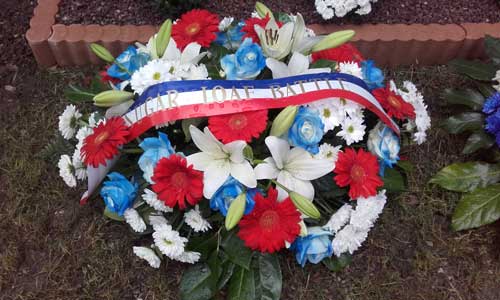 |
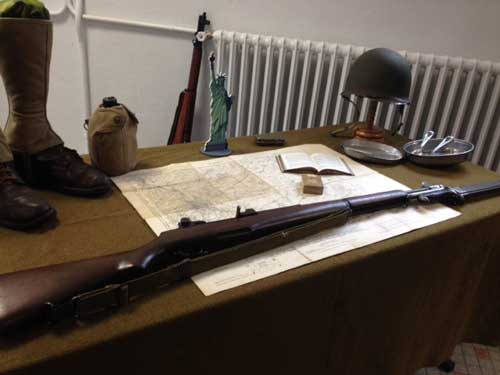 |
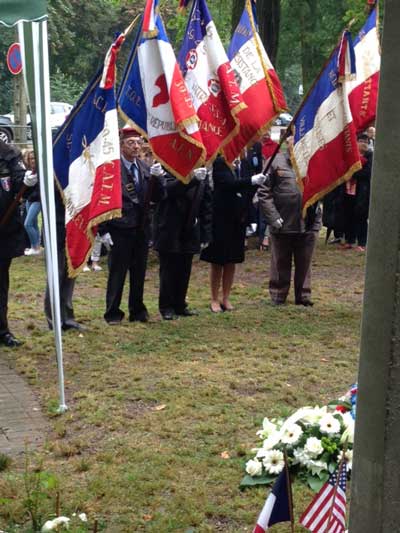 |
|
|
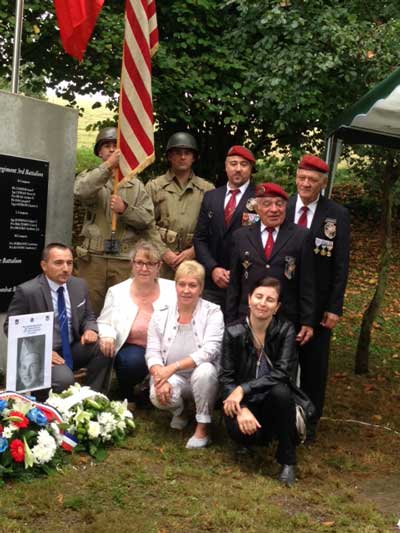
Please contact Mr. Emmanuel Peignier for more information about this memorial